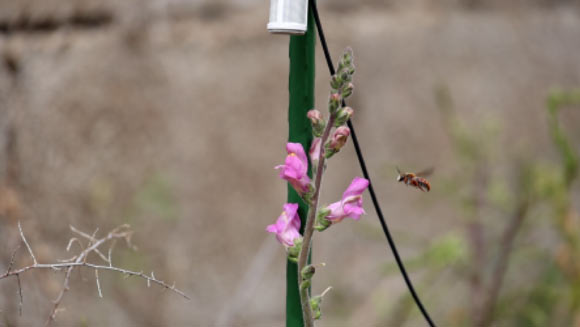Now Reading: Buzzing Pollinators Trigger Plants to Boost Nectar Production: Study
-
01
Buzzing Pollinators Trigger Plants to Boost Nectar Production: Study
Buzzing Pollinators Trigger Plants to Boost Nectar Production: Study

Quick Summary:
- Researchers led by Professor Francesca Barbero studied the vibroacoustic signals produced by flying pollinators, such as bees, during interactions with snapdragon (Antirrhinum sp.) flowers.
- Pollinator sounds from hovering, landing, and takeoff create unique acoustic signatures that influence plant behavior.
- Experiments revealed that snapdragons responded to buzzing sounds of spotted red-resin bees (Rhodanthidium sticticum) by increasing nectar volume and altering gene expression related to sugar transport and nectar production.
- The study suggests plants may use these responses as adaptive strategies for survival and co-evolution, potentially influencing pollinator fidelity.
- Researchers highlighted the possibility of using sound stimuli in agriculture to attract pollinators for crops that rely on insect-mediated fertilization.
- Findings were presented at the 25th International Congress on Acoustics (ASAICA25).
Indian Opinion Analysis:
This research offers important insights into how plants respond adaptively to acoustic signals from pollinators-a novel dimension in plant-pollinator coevolution studies typically focused on visual or olfactory cues. By demonstrating measurable changes like nectar production and genetic alterations in response to specific bee buzzing patterns, it highlights a sophisticated survival mechanism. While direct applications in agriculture are not yet clear-cut, this opens pathways for potential innovations like acoustic methods to boost crop pollination efficiency-an area critical for food security.
Furthermore, understanding vibroacoustic signaling could deepen ecological knowledge about interspecies dialog systems. These findings underscore nature’s complexity while hinting at practical solutions to mitigate declining wild insect populations’ impact on agricultural productivity.

























